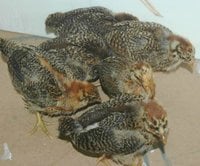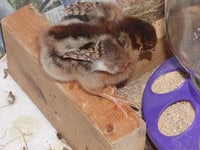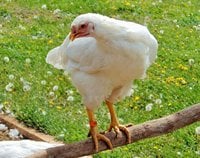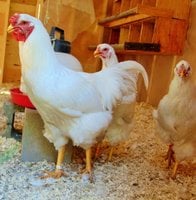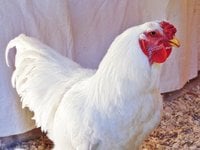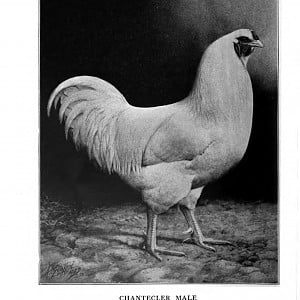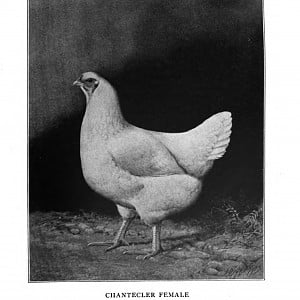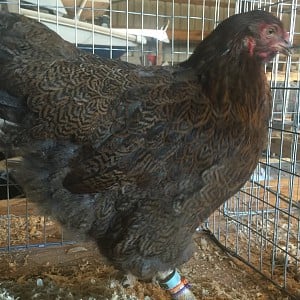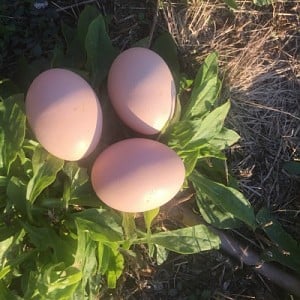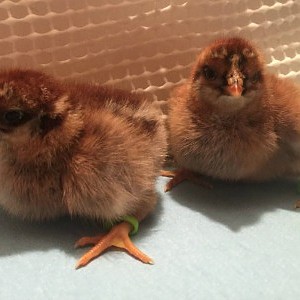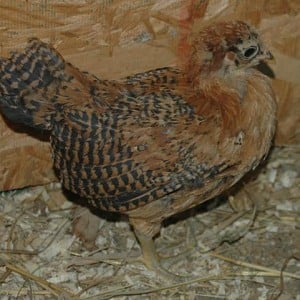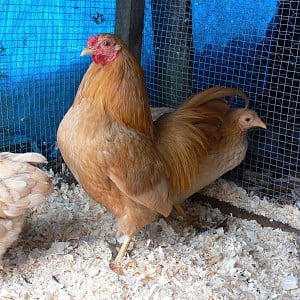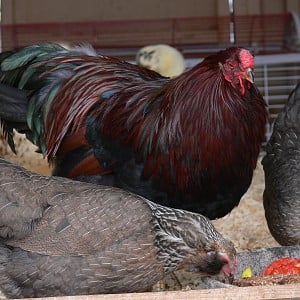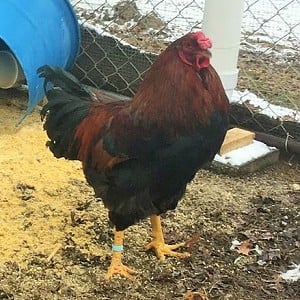General Information
- Breed Purpose
- Dual Purpose
- Comb
- Cushion
- Broodiness
- Average
- Climate Tolerance
- Cold
- Egg Productivity
- Medium
- Egg Size
- Medium
- Egg Color
- Light Brown
- Breed Temperament
- Friendly and Docile
- Breed Colors/Varieties
- White, Buff, and Partridge
- Breed Size
- Large Fowl and Bantam
- APA/ABA Class
- American/AOCCL
- Buy URL
- http://www.chantecler.club/ (Look for Breeders Directory)
The Chantecler is a dual purpose Canadian breed that is hardy, productive, and well suited to harsh winters. They are decent winter layers of large brown eggs, yet fairly broody and good mothers. Their meat qualities are also good, as they dress out at about five pounds most times. They are notable for having a very small cushion comb and almost no wattles, making them very resistant to frostbite. Their temperament is generally calm and quiet, though young birds can be flighty. They are often very good foragers. The name Chantecler was created from the combination of the French ‘chanter,’ “to sing,” and ‘clair,’ “bright”.
The White variety was created by Brother Wilfrid, a Trappist monk, at the Oka Agricultural Institute in the Province of Quebec. It was first presented to the public in 1918 after 10 years of effort and refinement, but it was not admitted to the Standard until 1921. Four crosses were used in the production of this variety: a Dark Cornish male over a White Leghorn female and a Rhode Island Red male over a White Wyandotte female. The next season, the pullets from the first class were mated with a cockerel from the second class. Select pullets from their offspring were bred to a White Plymouth Rock male and the subsequent breedings produced the fowl as it is today. Commercial breeds replaced the Chantecler over time, and by 1979 the Chantecler was no longer found in the university or commercial hatcheries and was in danger of extinction. A number of small flocks persisted, however. It has regained popularity in the last ten years or so, and can again be found available in a number of commercial hatcheries.
The Partridge variety originated in Edmonton, Alberta, Canada. Four breeds were used in the production of this variety: Partridge Wyandotte, Partridge Cochin, Dark Cornish, and Rose Comb Brown Leghorn. Some claim Dr. Wilkinson also used Orloffs to create this new bird. It was originally named the Albertan, but upon presentation to the APA in 1935 for recognition they deemed it so close in character to the existing White Chantecler that they classified it as another variety.
The Buff variety is a commonly bred and quite spectacular bird that unfortunately has not been recognized as of yet. There are many dedicated people working on it, however, so I expect we will see it in some future edition of the Standard of Perfection. Edit 3-12-18: the Buff Chantecler has now been recognized by the ABA. There are not enough qualifying breeders to mount a bid for APA acceptance, though, so if you are a member of the APA and breed LF Buff Chanteclers, please consider helping out!

Chantecler eggs

Partridge Chantecler chicks

Partridge Chantecler juvenile

White Chantecler pullet

Buff Chantecler bantam rooster with hens
For more information on this breed and their owners' and breeders' experiences with them, see our breed discussion here: https://www.backyardchickens.com/threads/chicken-breed-focus-chantecler.1076088/
The White variety was created by Brother Wilfrid, a Trappist monk, at the Oka Agricultural Institute in the Province of Quebec. It was first presented to the public in 1918 after 10 years of effort and refinement, but it was not admitted to the Standard until 1921. Four crosses were used in the production of this variety: a Dark Cornish male over a White Leghorn female and a Rhode Island Red male over a White Wyandotte female. The next season, the pullets from the first class were mated with a cockerel from the second class. Select pullets from their offspring were bred to a White Plymouth Rock male and the subsequent breedings produced the fowl as it is today. Commercial breeds replaced the Chantecler over time, and by 1979 the Chantecler was no longer found in the university or commercial hatcheries and was in danger of extinction. A number of small flocks persisted, however. It has regained popularity in the last ten years or so, and can again be found available in a number of commercial hatcheries.
The Partridge variety originated in Edmonton, Alberta, Canada. Four breeds were used in the production of this variety: Partridge Wyandotte, Partridge Cochin, Dark Cornish, and Rose Comb Brown Leghorn. Some claim Dr. Wilkinson also used Orloffs to create this new bird. It was originally named the Albertan, but upon presentation to the APA in 1935 for recognition they deemed it so close in character to the existing White Chantecler that they classified it as another variety.
The Buff variety is a commonly bred and quite spectacular bird that unfortunately has not been recognized as of yet. There are many dedicated people working on it, however, so I expect we will see it in some future edition of the Standard of Perfection. Edit 3-12-18: the Buff Chantecler has now been recognized by the ABA. There are not enough qualifying breeders to mount a bid for APA acceptance, though, so if you are a member of the APA and breed LF Buff Chanteclers, please consider helping out!
Chantecler eggs
Partridge Chantecler chicks
Partridge Chantecler juvenile
White Chantecler pullet
Buff Chantecler bantam rooster with hens
For more information on this breed and their owners' and breeders' experiences with them, see our breed discussion here: https://www.backyardchickens.com/threads/chicken-breed-focus-chantecler.1076088/

